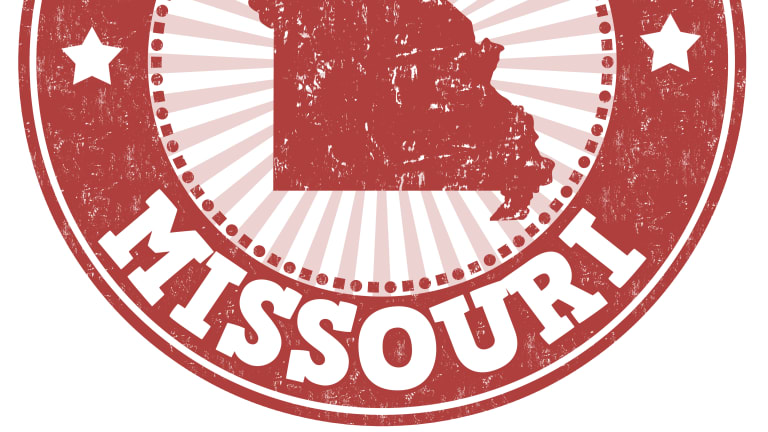It’s been more than 35 years since Ronald Reagan stated, during his first inaugural address, “Those who say that we’re in a time when there are no heroes, they just don’t know where to look.” We discovered heroes in every state, starting with the determined 69-year-old who won a match at an ITF Pro Circuit event earlier this year in the Alabama town of Pelham, and culminating with the coach who has overcome multiple sclerosis to build a winning program at the University of Wyoming. Their compelling stories of courage, perseverance and achievement demonstrate that the message delivered by our 40th President rings as true today as it did then.
At the end of each year, after a season that spans the globe, one nation’s name is engraved on a famed silver cup. The Davis Cup is the sport’s premier men’s team competition, but how did it begin? Or more accurately, who began it?
It all started in 1899, with a 21-year-old St. Louis native by the name of Dwight Filley Davis. In an effort to spark the nation’s interest in the new sport of tennis, the Harvard senior and his college teammates, Malcolm Whitman and Holcombe Ward, were invited to partake in an inter-regional battle against players on the West Coast. It just so happened that the same year, the world was captivated by the America’s Cup, which pitted the United States against England in a sailing competition.
Davis wanted to make tennis more of a global force. If a trophy could ignite such interest in international yacht racing, why couldn’t it do the same for tennis?
The namesake for the Davis Cup was raised in Missouri, and he picked up the game at the age of 14 while vacationing in Massachusetts. Just seven short years later, he would help bring two nations together—the United States and the British Isles—for the first time in what he called the International Lawn Tennis Challenge.
Coming from a wealthy Midwestern family, Davis was able to donate an expertly crafted silver trophy for the event. The two-piece punch bowl, 13 inches high and 18 inches wide, would eventually be attached to a large circular base to make room for all of the winning country’s names, as the competition—soon to be called the Davis Cup—grew from two teams to over 100.
The first-ever tie took place in 1900, at the Longwood Cricket Club in Boston. The British team of Ernest D. Black, Herbert Roper Barrett and Roper Barrett sailed across the Atlantic to face their American foes. In front of 1,200 spectators, captain Davis, Whitman and Ward won 3-0 to keep the Cup home.
Davis would retire soon after winning the Davis Cup again in 1902. He turned to law—earning a degree from Washington University in St. Louis—and then public work, helping start the first recreational sports leagues in St. Louis public parks. As World War I loomed, Davis joined the U.S. Army. He later became the assistant secretary of war under President Coolidge, and then the General of the Philippines for President Hoover. The Davis Cup was in the midst of a six-year hiatus when Davis passed away in 1945.
Competition for the Cup would resume in 1946, and the event has been held every year since World War II’s disruption.
Davis’ lasting legacy, more so than his tennis talent, was passed down to his family. His son, Dwight F. (Pete) Davis Jr.—who was once a vice president in the New York Mets’ organization—presented the Cup in 1972. That year, American Stan Smith clinched America’s fifth Davis Cup title in a row.
“That was interesting,” Smith said of meeting Davis Jr. “The Davis Cup was one of those things that really became so important to our sport.”
“It’s a tremendous sense of pride to be wearing the blazer, and to be standing there when they play the national anthem,” Smith said. “I remember my first experience was as a doubles team, back in 1968 … The score was said as ‘set, the United States,’ and ‘game, set, match, the United States.’ There’s a real pride that you’re playing for your country.”
Before his career’s end, Smith would be part of seven winning teams. Many of his career highlights are Davis Cup matches, and those were made possible by Davis’ desire to grow the game over 116 years ago.
“He was obviously the most successful, on many levels, in the family,” Davis’ great grandson, Dwight F. (Pete) Davis IV, says of his great grandfather. “And I kind of use that as an inspiration to be successful and do something. Obviously not as big as he did, and I’m definitely not as good a tennis player.”
There’s great pride in being named after the man who started the Cup.
“He’s kind of an inspiration to me,” Davis IV says.
Another man grateful for Davis’ innovation is former United States captain Patrick McEnroe.
“My heart is in Davis Cup, and for the McEnroes it’s always been that way,” he says. “There’s nothing like walking out and representing your country, and representing your federation and your fans. That’s a unique experience. It’s some of my best memories—not just winning the Davis Cup, but also being a part of it. It’s something I’ll never forget.”
McEnroe played on the U.S team for three years, and served as captain for 10 years. He captained the last American team to take home the Cup, back in 2007.
“Dwight Davis, I don’t know how he came up with it, but God bless him for what he did,” McEnroe says. “It continues to this day, and let’s hope it can get bigger and better.”
